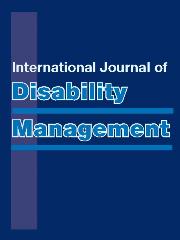Article contents
DM for severely injured claimants in the Botswana motor vehicle accident fund
Published online by Cambridge University Press: 12 November 2014
Abstract
The Motor Vehicle Accident Fund (MVA Fund) started operations on 1 January 1987 to service third party cover from funds earned from a levy on fuel. Originally called the Motor Vehicle Insurance Fund, the MVA Fund has been going through profound change in order to deliver services that meet the expectations of its stakeholders. Over the years, the governing Act underwent reviews as a response to feedback from both the public and stakeholders. Currently the Fund is governed by the Motor Vehicle Accident Fund Act No. 15 of 2007, which is a hybrid of both a fault-based and a no fault compensation system. Severe Injuries MVA Fund has a total of 1 589 claimants who suffered severe injuries during road crashes.. Role of MVA Fund in management of the severely injured The Act has put emphasis on medical treatment and rehabilitation as one of its core mandates. The timeliness of medical attention and rehabilitation results in improved claimants’ outcomes. Some of the objectives of the Fund in managing these claimants include among others:
• Restoring claimants to highest possible level of functionality
• Vocational rehabilitation
• Return to work
• Social rehabilitation Achievements by Botswana MVA Fund
Despite the challenges faced by developing countries, the Fund managed to:
• Remain sustainable hence continuing to deliver on its mandate
• Support the severely injured by:
○ medical and rehabilitation cover
○ loss of income o enhancement of quality of life e.g. house/workplace modification o providing social and welfare care
○ advocacy role
• Build capacity in both government and non-governmental organisations as a long-term investment in the management of the severely injured.
The Fund continues collaborating with relevant stakeholders and international bodies for best practice in managing these claimants.
- Type
- Abstract
- Information
- Copyright
- Copyright © The Author(s) 2014
- 1
- Cited by


